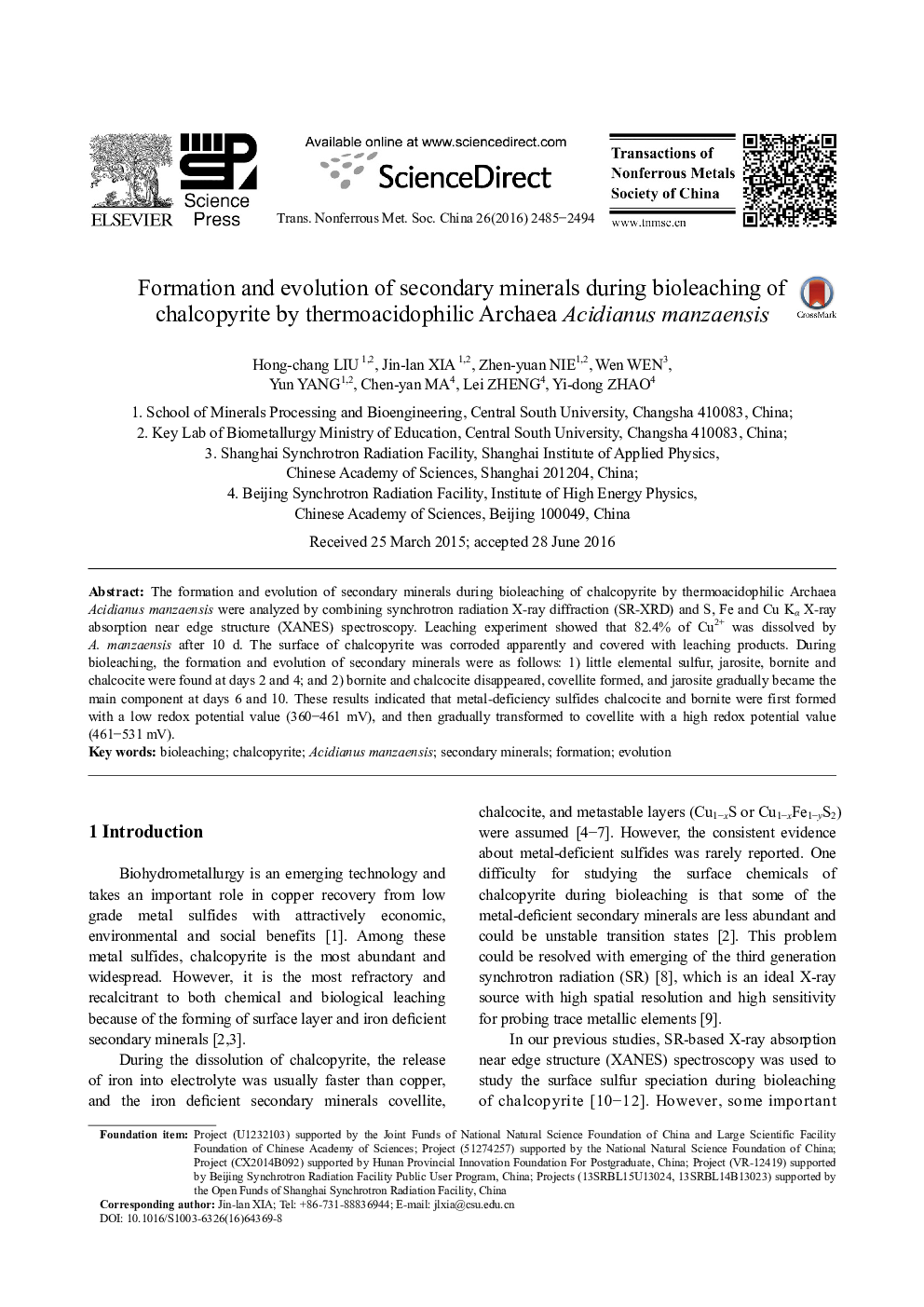| Article ID | Journal | Published Year | Pages | File Type |
|---|---|---|---|---|
| 8012250 | Transactions of Nonferrous Metals Society of China | 2016 | 10 Pages |
Abstract
The formation and evolution of secondary minerals during bioleaching of chalcopyrite by thermoacidophilic Archaea Acidianus manzaensis were analyzed by combining synchrotron radiation X-ray diffraction (SR-XRD) and S, Fe and Cu Kα X-ray absorption near edge structure (XANES) spectroscopy. Leaching experiment showed that 82.4% of Cu2+ was dissolved by A. manzaensis after 10 d. The surface of chalcopyrite was corroded apparently and covered with leaching products. During bioleaching, the formation and evolution of secondary minerals were as follows: 1) little elemental sulfur, jarosite, bornite and chalcocite were found at days 2 and 4; and 2) bornite and chalcocite disappeared, covellite formed, and jarosite gradually became the main component at days 6 and 10. These results indicated that metal-deficiency sulfides chalcocite and bornite were first formed with a low redox potential value (360-461 mV), and then gradually transformed to covellite with a high redox potential value (461-531 mV).
Related Topics
Physical Sciences and Engineering
Materials Science
Metals and Alloys
Authors
Hong-chang LIU, Jin-lan XIA, Zhen-yuan NIE, Wen WEN, Yun YANG, Chen-yan MA, Lei ZHENG, Yi-dong ZHAO,
